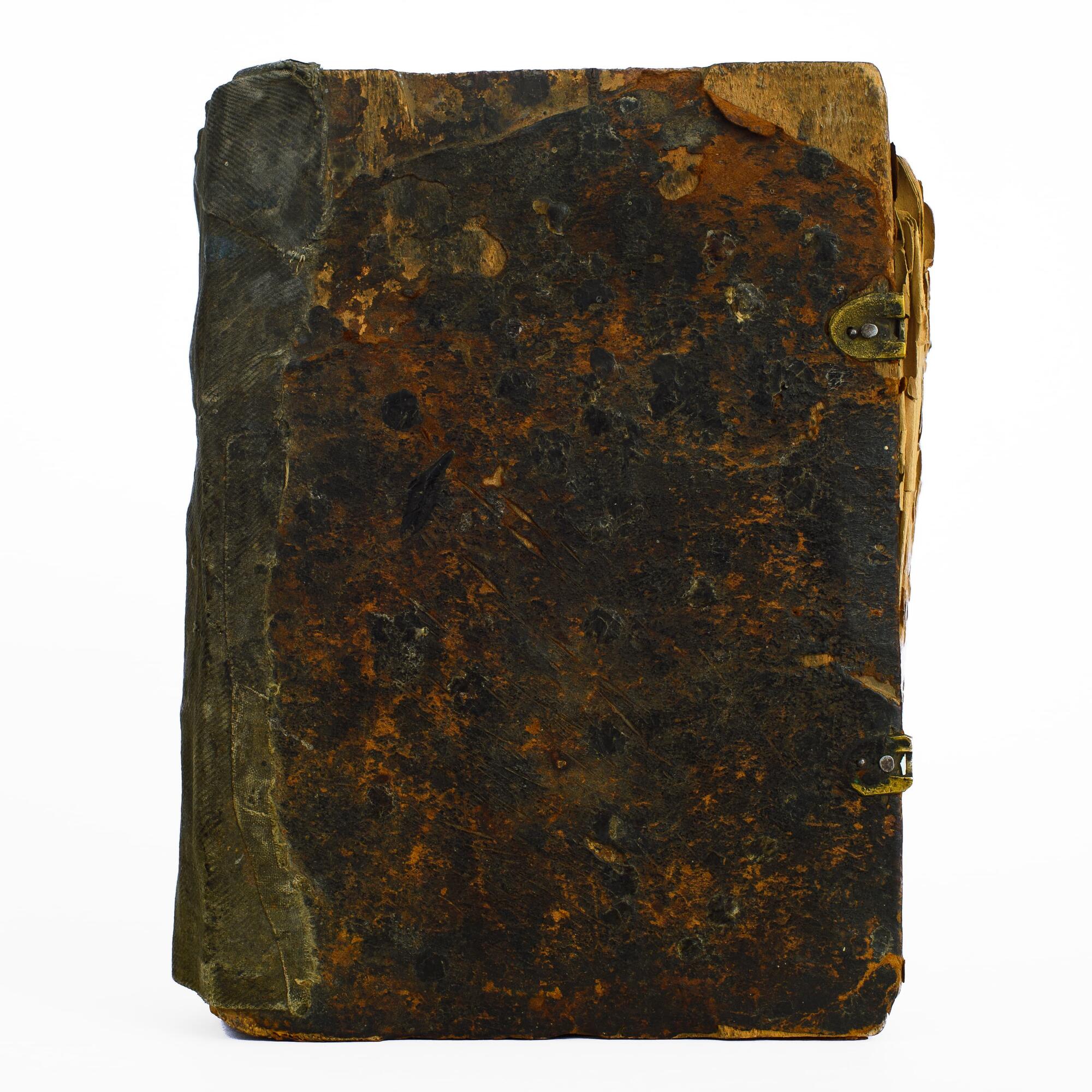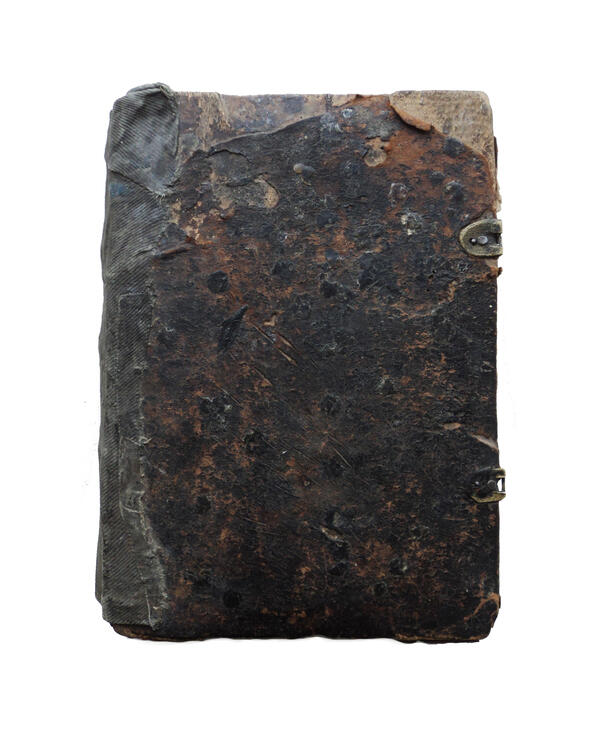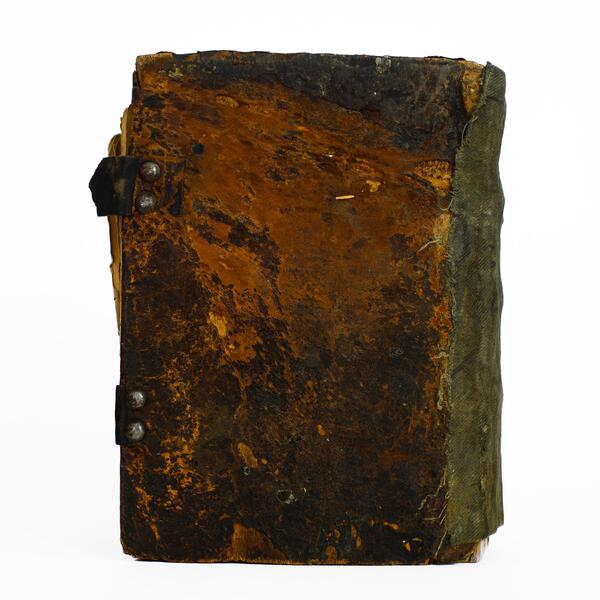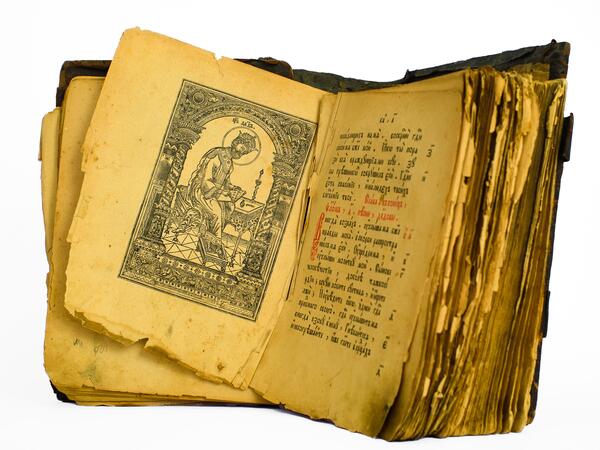The Psalter is the oldest prayer book. The first psalms — prayers in a poetic form — were written a thousand years before the nativity of Christ and came to Christianity from Judaism. For believers, the Psalter serves as a guide to prayer and glorification of God.
This book is read at church services during the week, and during Lent — twice in seven days. The psalms are part of every service, so the Psalter became the main educational book of Old Rus. The student of the psalm book was considered a literate person who was able to read any books.
The Psalter was not only a desk book that was leafed through at home when people had free time. It was taken with them on the road and read by the family.
The Psalter contains 150 psalms — they are songs praising God.
The “Psalter” from the collection of the Museum Complex of Kuybyshev was printed at the end of the 19th century. The covers of the book are made of wood and dressed up in dark brown leather. On the outer edges of the book are two fasteners.
The book is printed typographically on white paper without filigree. It contains 403 numbered sheets. Each section of the book opens with engraved headpieces of floral patterns, in the finale of each part are ornamental endings. The texts begin with an ornate initial. The psalms are printed in two colors: black and red.
The book contains an illustration — an engraving with the image of the holy King David composing a psalm. The engraving is printed in black ink.
Saint David lived 1,000 years before Christ. He was a king and a prophet. With God’s help, David defeated the giant Goliath, for which the people revered him. After becoming king, David built the capital city of Jerusalem and in it a new tabernacle — a tent, where the Lord testified about Himself to people and informed them of His revelations. Once David greatly sinned before God, but ardently repented of his sin: the psalms, there were about 70 of them, which he wrote, became a monument of David’s repentance.
As a book necessary for worship, the Psalter was translated into Slavic by Saints Cyril and Methodius (according to the chronicler Nestor), and since then has become a popular book among the Russian people.
This book is read at church services during the week, and during Lent — twice in seven days. The psalms are part of every service, so the Psalter became the main educational book of Old Rus. The student of the psalm book was considered a literate person who was able to read any books.
The Psalter was not only a desk book that was leafed through at home when people had free time. It was taken with them on the road and read by the family.
The Psalter contains 150 psalms — they are songs praising God.
The presented book is the Psalter combined with the Book of Hours — a collection of prayers and hymns read in the daily cycle of services.
The “Psalter” from the collection of the Museum Complex of Kuybyshev was printed at the end of the 19th century. The covers of the book are made of wood and dressed up in dark brown leather. On the outer edges of the book are two fasteners.
The book is printed typographically on white paper without filigree. It contains 403 numbered sheets. Each section of the book opens with engraved headpieces of floral patterns, in the finale of each part are ornamental endings. The texts begin with an ornate initial. The psalms are printed in two colors: black and red.
The book contains an illustration — an engraving with the image of the holy King David composing a psalm. The engraving is printed in black ink.
Saint David lived 1,000 years before Christ. He was a king and a prophet. With God’s help, David defeated the giant Goliath, for which the people revered him. After becoming king, David built the capital city of Jerusalem and in it a new tabernacle — a tent, where the Lord testified about Himself to people and informed them of His revelations. Once David greatly sinned before God, but ardently repented of his sin: the psalms, there were about 70 of them, which he wrote, became a monument of David’s repentance.
As a book necessary for worship, the Psalter was translated into Slavic by Saints Cyril and Methodius (according to the chronicler Nestor), and since then has become a popular book among the Russian people.





